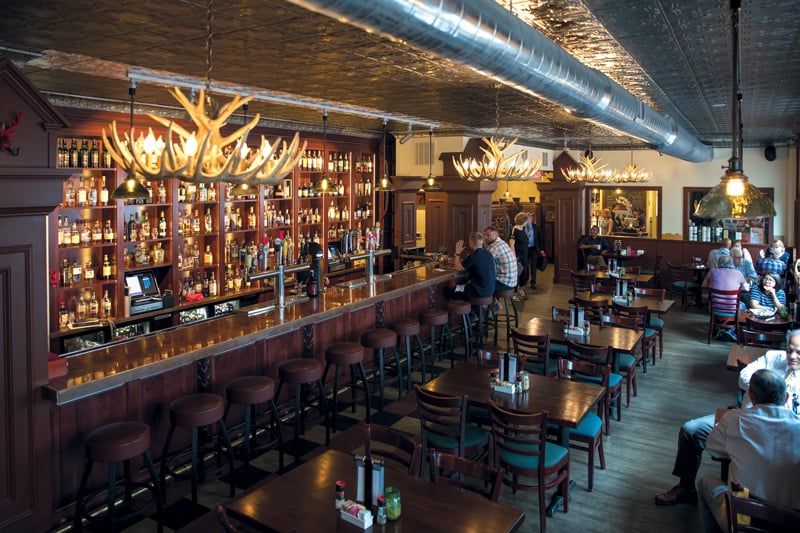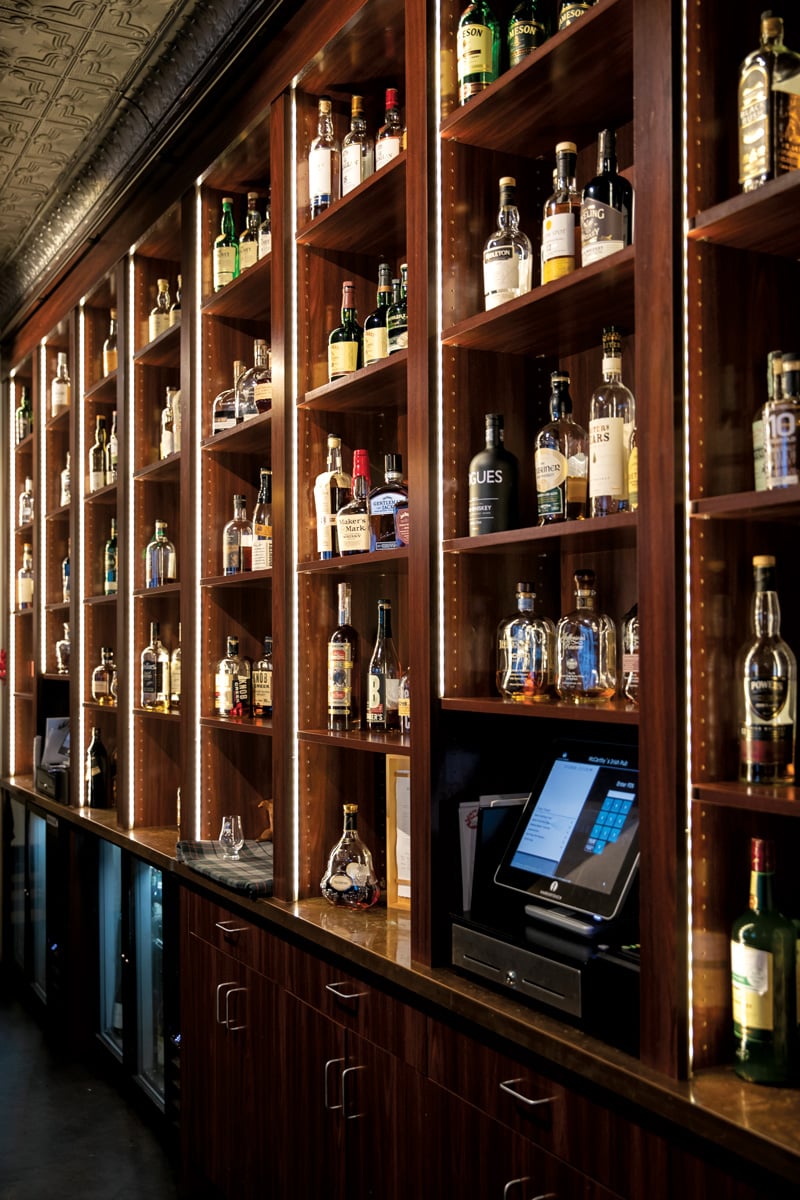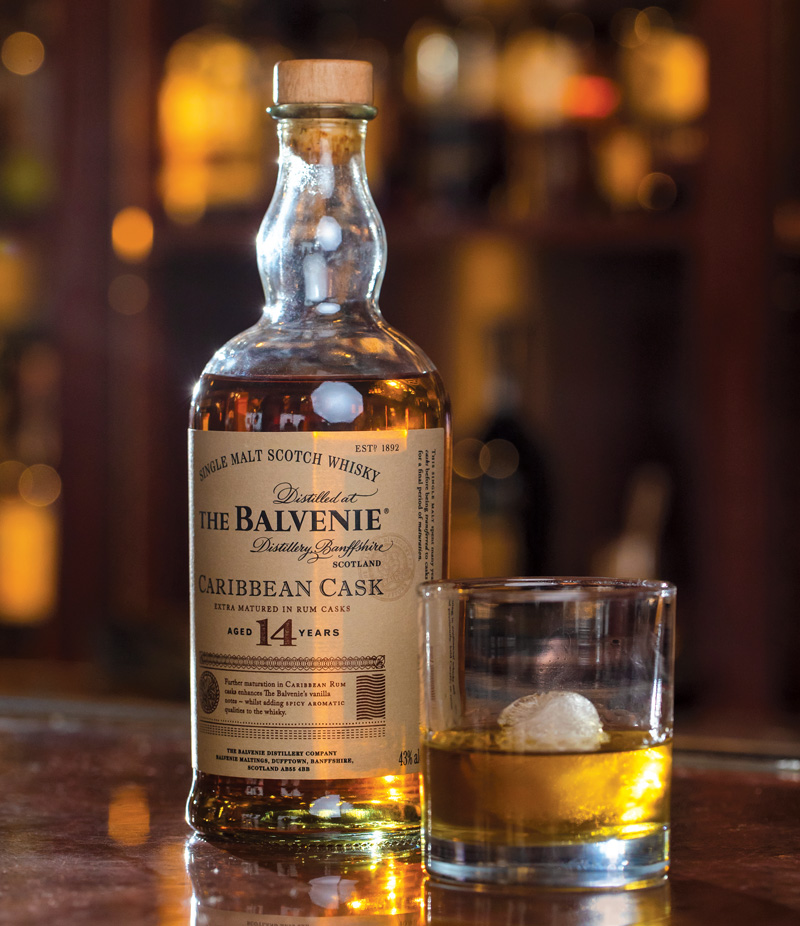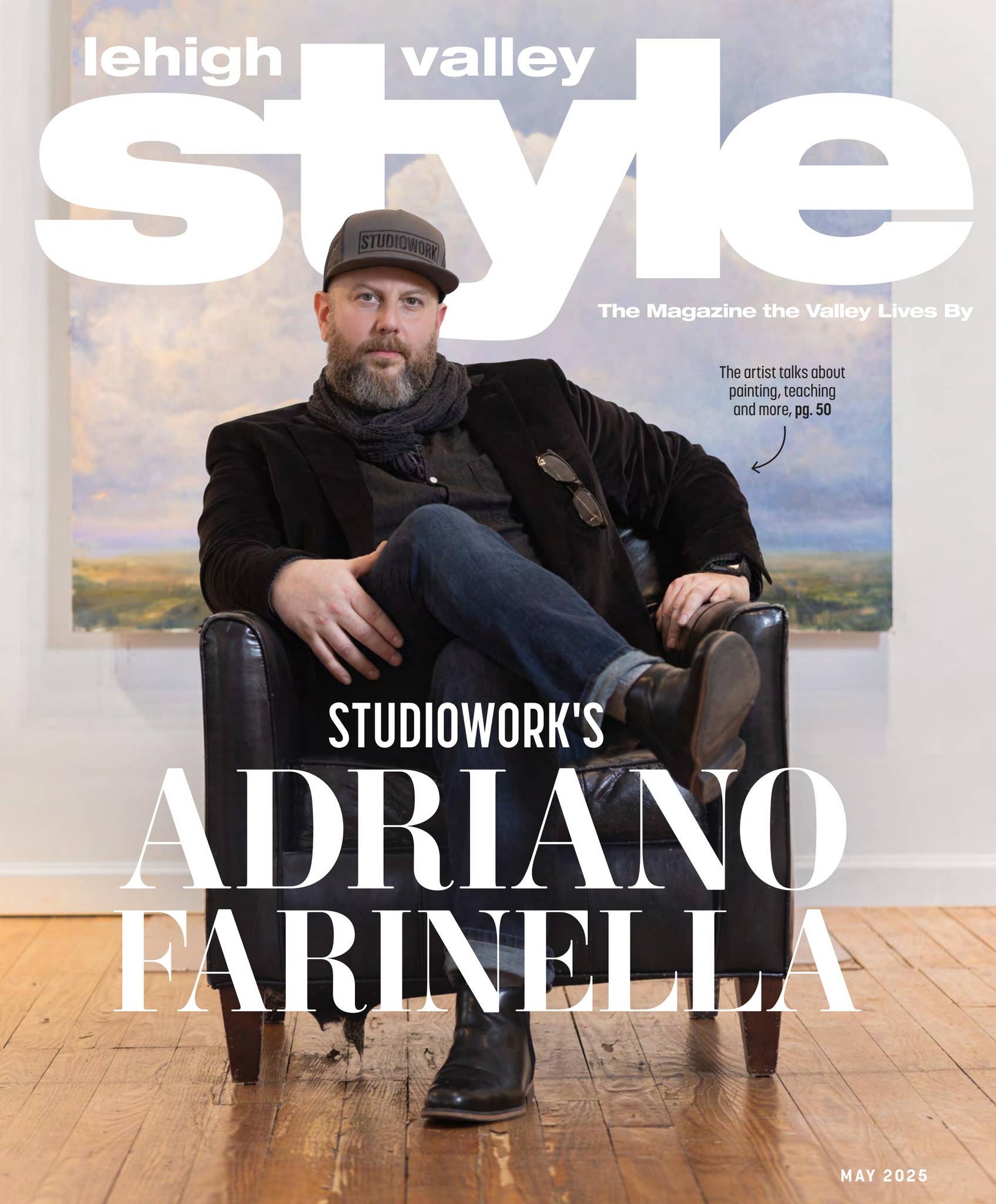
James Bond can keep his martini. Instead, let's raise a glass to the Old Fashioned, the Manhattan and the John Collins. Whiskey has been the spirit of choice of fabled dignitaries (Winston Churchill), wordsmiths (Mark Twain) and movie stars (Clark Gable) throughout history. Even now, whether it's starring as a solo act in your glass (neat or on the rocks), or playing a supporting role in a tasty, boozy concoction at your favorite bar, whiskey is just the thing to wet your whistle. And yet, the vast variations and derivatives of this legendary brown liquor can seem overwhelming. Here's everything you need to know about where it came from, how to drink it and who's mixing the most flavorful batches in the Lehigh Valley.
A Brief History
Whiskey's origins are somewhat murky. In his book Whiskey: The Definitive World Guide, the late author Michael Jackson claims that the distillation process that would eventually result in whiskey can be traced to the Arab world around 800 AD. Other sources claim distillation was happening in Mesopotamia much earlier than that—2000 BC. The first distilled alcohol was used for medicinal purposes before it made the transition to mass consumption. It appears that Scotland and Ireland caught on no later than the 15th century, but, again, the dates vary wildly. Bottom line: By this point in history, whiskey has been around for hundreds of years, giving distillers plenty of time to perfect their potions.
Trivia: The most expensive bottle of whiskey ever sold fetched $1.1 million at an auction in Hong Kong earlier this year. The Macallan whisky was aged in a cask in a Scottish distillery for 60 years.

To E or not to E?
Don't blame your spell check for being confused. Both “whisky” and “whiskey” are considered acceptable spellings. Whether the ‘e' is used or not basically comes down to geography. Generally speaking, “whiskey” is made in the United States and Ireland, while “whisky” comes from other regions like Scotland, Japan and Canada.
TIP: If the originating country has as ‘e' in it (UnitEd StatEs, IrEland), use an ‘e' when spelling “whiskey.” There are exceptions to this. But take comfort in the fact that at least both are pronounced the same, so you won't confuse the bartender.
What's the Difference Between Whiskey & Bourbon?
Again, geography is key here.
Hint: All bourbon is whiskey, but not all whiskey is bourbon.
Although bourbon has long been associated with Kentucky, it can be made anywhere in the United States. But bourbon is not defined by its birthplace alone. To earn the bourbon title, it must:
- Be made with at least 51 percent corn (the rest is a combination of other grains, such as barley, wheat or rye)
- Must be stored in new, charred oak barrels
- Must be distilled to no more than 160 proof, and poured into the barrel at 125 proof
Popular brands include Jim Beam, Maker's Mark and Knob Creek
What About Scotch?
Scotch is whisky (notice—no ‘e'!) that must be made in Scotland, typically with malted barley or grain. It follows different distillation and production regulations than bourbon. Scotland is divided into five major regions that produce scotch whisky.
What Other Whiskeys Are Made in the USA?
American Rye or Wheat Whiskey Adheres to the same rules as bourbon, but is made with either 51 percent rye or 51 percent wheat mash instead of corn. Popular brands include WhistlePig, Bulleit Rye and Woodford Reserve Rye.
Tennessee Whiskey Made in (you guessed it) Tennessee. The majority pass through the Lincoln County Process, in which the whiskey is filtered through charcoal. Popular brands include Jack Daniel's and George Dickel.
Trivia: Americans may have plenty of homegrown options, but we love our Irish whiskey. According to NPR, the U.S. is the largest importer of Irish whiskey, with Jameson being the brand of choice.

Who's Making It in the Lehigh Valley?
Social Still, Bethlehem
Freakshow Straight Bourbon: Clean, cereal notes with a hint of rye spice. Slightly nutty with sweet caramel.
Barista Bourbon: Sweet and natural bourbon with a delicate coffee note on the finish.
County Seat Spirits, Allentown
Collaboration Series Malt Whiskeys: A series of malt whiskeys made with local beer. The latest batch is an IPA Whiskey made with CitraSqueeze IPA beer from HiJinx Brewing Company.
Hidden Copper Bourbon: A heavily wheated bourbon made from corn, wheat and malted barley, and named for the hiding of the Liberty Bellin Allentown in 1777.
Triple Sun Spirits, Emmaus
*First bourbon release slated for September 2018:
Pennsylvania Straight Bourbon: A sipping bourbon with a light grain character and oakiness that blend with a touch of orange and spices for a balance of heat, complexity and character.
Xplorer Spirits, Allentown
Xplorer Bourbon (High Rye) Whiskey: A balance of caramel and vanilla with faint, sweet corn and some spice.
Eight Oaks Craft Distillers, New Tripoli
Pinot Bourbon: Traditional bourbon aged a second time in French oak casks previously used to age pinot noir wine.
Penn Rye Whiskey: Made with rye grown on Eight Oaks farmland, this classic spirit provides hints of caramel, vanilla and smoke.
How's It Made?
While there are many variations in where whiskey is made, its composition (malt, grain, blended), and how it's distilled (pot still, column still), the process has six basic steps, says distiller Logan Snyder of Eight Oaks Craft Distillers.
Preparing the Mash Bill
Raw, fresh grains (corn, rye or wheat) are harvested and cooked. Barley is malted, a process in which it's soaked, dried and heated.
Mashing
The cooked grains and malted barley are combined with water and heated to create a mixture known as mash.
Fermenting
Mash and yeast are put inside a fermentation tank. The yeast converts the sugars into alcohol. The remaining liquid is called a wash.
Distilling
The wash is put inside a still, where it's heated. The alcohol becomes vapor and is separated from the water. The process is repeated to create a substance known as high wine or white whiskey.
Aging
The white whiskey is put into wooden barrels to age. “You want a barn climate—hot days and cold nights,” Snyder says. “The barrels shrink and expand, and the whiskey is forced in and out of the wood.” On average, the aging process takes anywhere from 18 months to four years.
Bottling
After it's taste-test approved, the whiskey is put into glass bottles and is ready to be consumed.

How to Drink It
Neat
This is straight-up, naked whiskey—no ice. If you really want to taste the whiskey's unadulterated flavor profile, this is the method for you.
On the Rocks
Also known as “with ice.” Room temperature alcohol isn't for everyone. This is a good compromise.
Splash of Water
There are some purists who believe adding water to whiskey actually makes it taste better. A study released last year in Sweden and published in the journal Scientific Reports backs up that theory.
Cocktails
If you're easing your way into whiskey drinking, or you just don't like the taste of it by itself, there are countless concoctions built around the spirit, ranging from sweet (whiskey lemonade) and belly-warming (Irish coffee) to downright refreshing (mint julep).
Where to Drink It?
Bethlehem's Social Still is a restaurant, a bar and a distillery all rolled into one. It uses Pennsylvania-grown grains and Irish barley in all of its whiskeys and bourbons.
What to Drink: Boulevardier of Broken Dreams
Freakshow Straight Bourbon, house-made Amaro, sweet vermouth, orange marmalade, Amarena cherry, bitters.
Whiskey lovers will find plenty to salivate over at The Hamilton Kitchen & Bar in Downtown Allentown, starting with the wall of whiskey that greets patrons near the entrance. Director of Operations Dave Adams says The Hamilton offers more than 400 varieties, ranging from well-known favorites to Japanese whisky to hard-to-find selections such as A.H. Hirsch Reserve 16 Year.
What to Drink: Manhattan No. 2
Rotating private barrel bourbon, Carpano Antica Formula Sweet Vermouth, Bauchant Orange Liqueur and Angostura Orange Bitters.
Any place that bills itself as a whiskey bar better have the bottles to back it up, and McCarthy's Red Stag Pub in Bethlehem doesn't disappoint. “We have grown to over 270 whiskeys and continue to expand,” says front house manager and official whiskey ambassador Janet Brennan. “We have everything from monthly tastings to specialty pairing dinners to our most recent Whiskey Club membership.”
What to Drink: Trinity Knot
Woodford Double Reserve, white rum, cabernet and house-made pear liqueur.
*Mark your calendar for Thursday, September 13 for Style's first-ever Whiskey & Fine Spirits Festival at ArtsQuest Center at SteelStacks. Head to lehighvalleywhiskeyfest.com for VIP and general tasting ticket info!*















